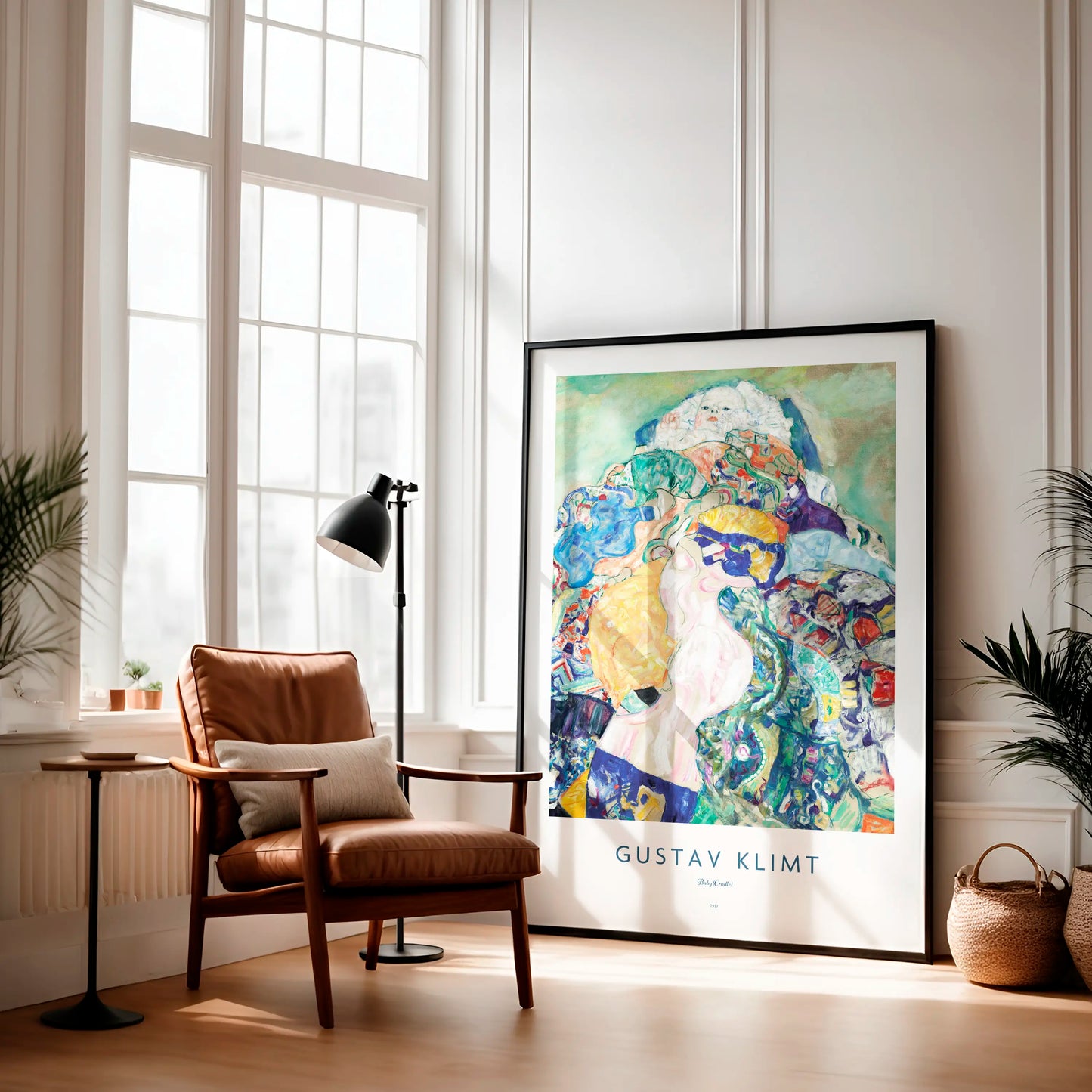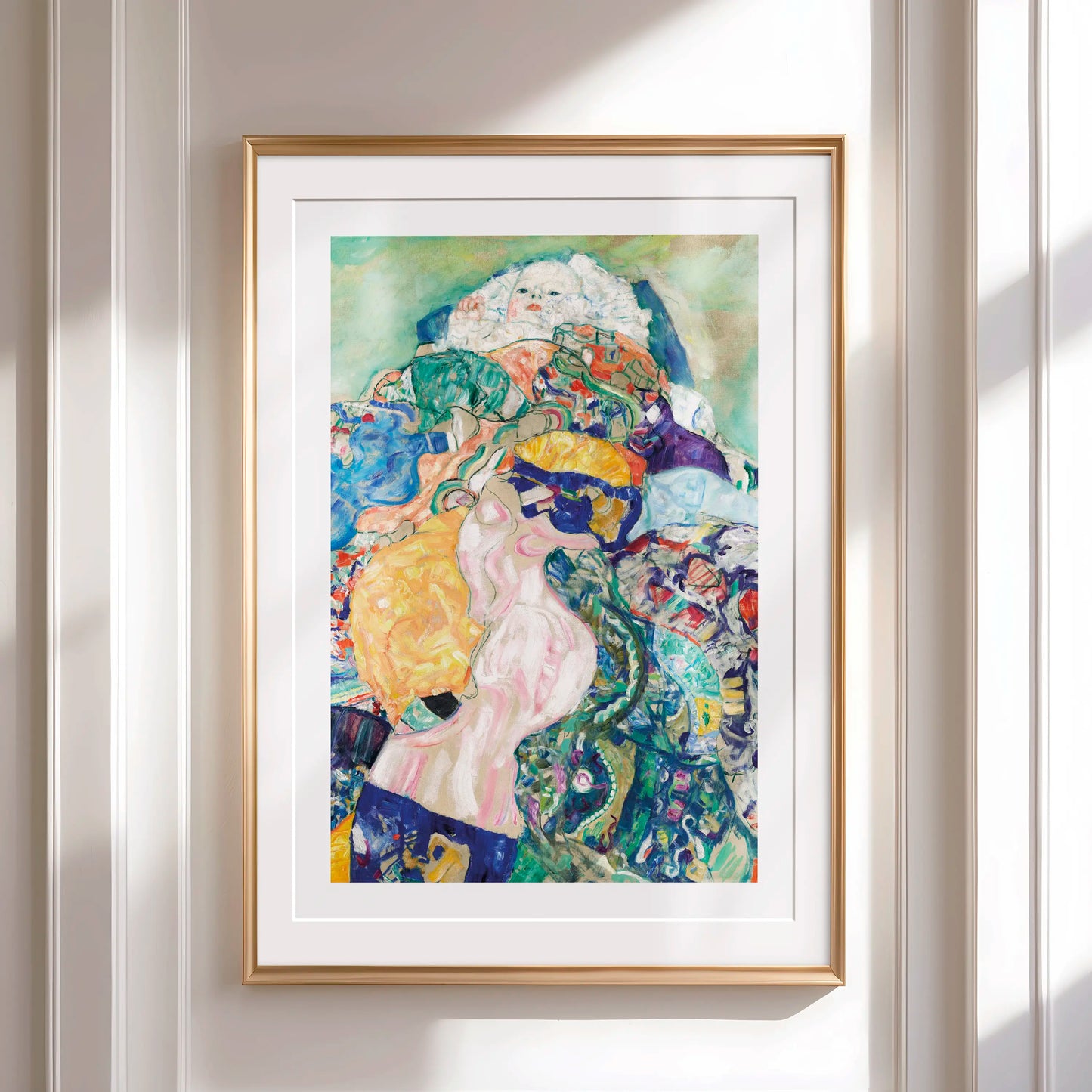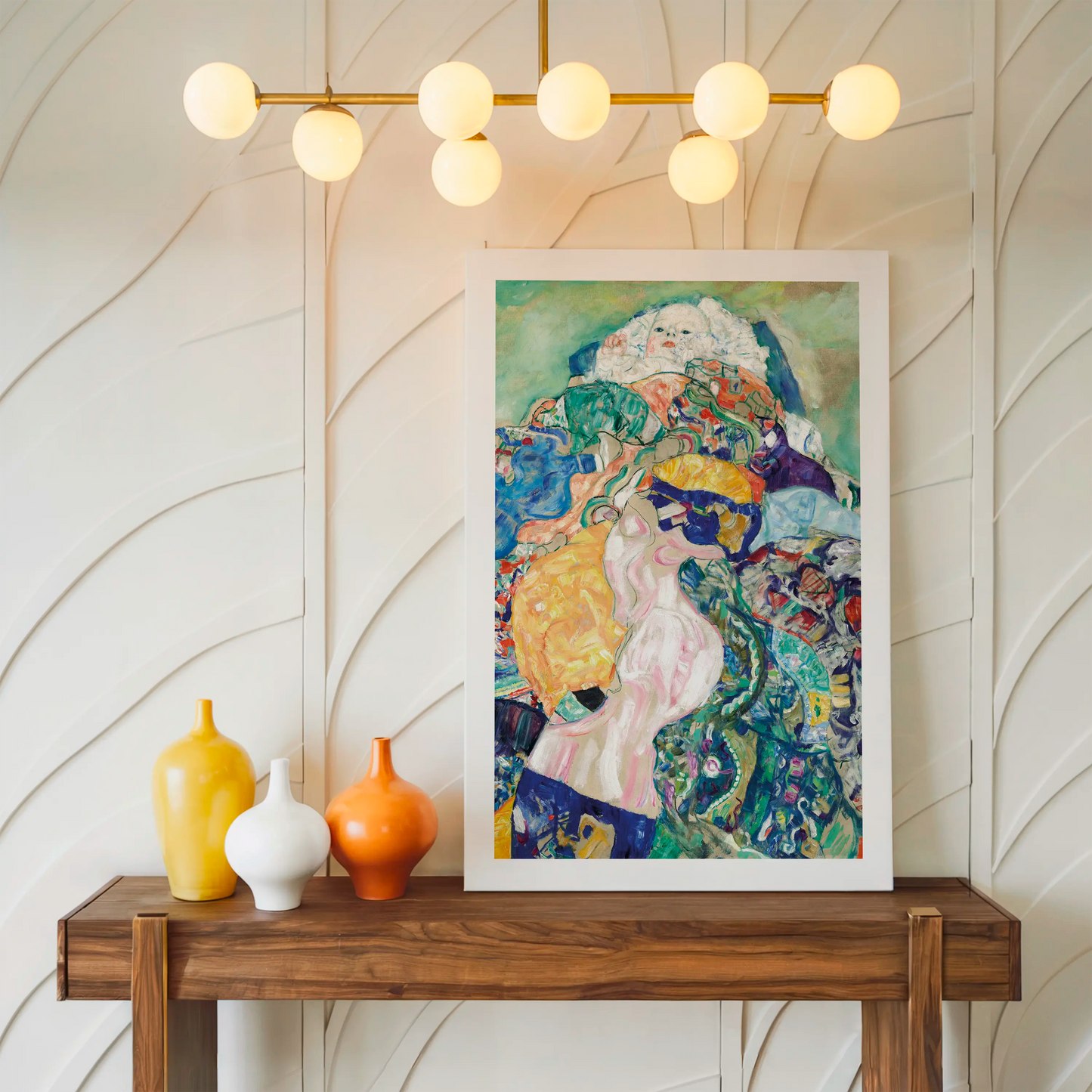Gustav Klimt - Baby (Cradle) (1917) - Digital File N177
Gustav Klimt - Baby (Cradle) (1917) - Digital File N177
Couldn't load pickup availability
Share
Paper Poster | Canvas Print | Digital File
1. Historical and Artistic Context
Gustav Klimt painted Baby (Cradle) in 1917–1918, at the very end of his career and life. This was a turbulent period marked by the First World War and economic instability in Vienna. Klimt, already an established leader of the Vienna Secession, shifted his attention from gilded decorative portraits to more intimate and symbolic explorations of life’s stages. The painting reflects both his fascination with the cycle of life and his personal circumstances, as he experienced the loss of a daughter and the birth of a son in 1915. Baby (Cradle) thus symbolizes renewal and continuity amidst personal and societal upheaval.
2. Technical and Stylistic Analysis
The painting presents a nearly square canvas dominated by a triangular composition. The baby’s head forms the apex, while the vibrant quilt expands toward the base, creating a pyramid-like balance. Klimt employs a dazzling interplay of colors—deep blues, bright yellows, greens, pinks, and purples—interwoven in bold, swirling patterns. The infant’s pale, delicate face contrasts sharply with the colorful chaos below, emphasizing innocence against the decorative background. This stylistic approach is characteristic of Klimt’s late period, where ornamental fields of color and expressive brushstrokes overshadow the realistic depiction of form, creating an almost abstract effect.
3. Symbolism and Interpretation
Baby (Cradle) is often interpreted as an allegory of the beginning of life. The infant, enveloped in layers of patterned fabric, symbolizes purity, fragility, and potential. The colorful quilt beneath the child suggests the richness of existence, a tapestry of experiences awaiting the newborn. The triangular structure evokes a sense of stability and timelessness, placing the child at the center of universal symbolism. Scholars also connect the painting to Klimt’s personal grief and hope, interpreting it as a reflection of his own family tragedies and joys. Ultimately, the work embodies both personal emotion and a broader meditation on innocence and renewal.
4. Technique and Materials
The painting was created with oil on canvas, without the use of Klimt’s earlier hallmark, gold leaf. Instead, Klimt relied entirely on pigment to achieve luminosity and richness. He used both sharply outlined motifs and looser, blended brushwork to create the quilt’s patchwork design. The layering of paint adds depth, while the pastel tones in the background highlight the baby’s whiteness and delicate presence. This emphasis on pure color rather than metallic embellishment marks a departure from his Golden Phase, reflecting his evolution toward a more painterly and expressive style in his final years.
5. Cultural Impact
Although not as famous as The Kiss, Baby (Cradle) remains a significant work within Klimt’s oeuvre and Viennese modernism. It has been featured in numerous international exhibitions, underlining its importance as part of Klimt’s late style. The painting continues to resonate with audiences because of its universal theme—new life—expressed through bold abstraction and ornament. Reproductions of Baby are often used in modern decor, linking Klimt’s decorative power to contemporary culture. As one of his final completed works, it has become emblematic of Klimt’s lasting influence on symbolism, Art Nouveau, and modern art.
6. Critical Reception and Scholarly Interpretations
Critics and scholars highlight Baby (Cradle) as a key example of Klimt’s late artistic exploration. Some view it as a culmination of his interest in life’s stages, complementing works like The Three Ages of Woman. Others emphasize how the painting reflects Klimt’s growing focus on ornament, where the baby seems nearly engulfed by decoration. While initially it received little attention at its 1917 exhibition, its critical reputation has grown steadily. Today it is recognized as a poetic and tender painting that combines Klimt’s ornamental genius with emotional resonance.
7. Museum, Provenance and Exhibition History
Baby (Cradle) is housed at the National Gallery of Art in Washington, D.C., acquired in 1978 through a gift from Otto and Franciska Kallir, important Klimt advocates. The work was first shown publicly in Stockholm in 1917, even before it was fully finished. It later passed through several Viennese collections and dealers before arriving in the United States. The painting has been displayed in major exhibitions across Europe, North America, and Asia, including retrospectives on Viennese modernism and Art Nouveau. Its exhibition history underscores its global recognition and significance.
8. Interesting Facts
1. The painting is also known simply as Baby or Child.
2. It is one of the few Klimt works depicting an infant.
3. Klimt began the painting on August 12, 1917, and it was half-finished within a day.
4. When first exhibited in 1917 in Stockholm, it was not fully complete.
5. The triangular composition symbolizes stability and timelessness.
6. No gold leaf was used—unusual for a Klimt work.
7. The quilt resembles a mosaic of colorful patterns.
8. Klimt may have drawn inspiration from the birth of his son in 1915.
9. The baby’s face appears both central and almost lost among the fabrics.
10. The painting was gifted to the National Gallery of Art in 1978 by Klimt’s dealer Otto Kallir.
9. Conclusion
Baby (Cradle) stands as one of Gustav Klimt’s final and most intimate explorations of human existence. Through a harmonious blend of ornamental abstraction and emotional tenderness, it captures the fragility and promise of new life. The painting reflects Klimt’s personal circumstances, his stylistic maturity, and his enduring preoccupation with the cycles of existence. As both a deeply personal work and a universal allegory, Baby (Cradle) secures its place as an essential part of Klimt’s legacy and as a lasting contribution to the art of the early 20th century.













